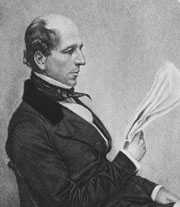Dorothy Thompson (1893 -1961)
Background
Dorothy Thompson
was born on July 9, 1893, Lancaster, New York, to British immigrants. She grew up in a religious household, her
father was a Methodist minister and
frequently took her to visit to parishioners across the suburbs of upstate New
York. according to https://exhibitions.ushmm.org/americans-and-the-holocaust/personal-story/dorothy-thompson At age 7, her mother died of sepsis. Soon after, her father remarried.
However, Thompson and her stepmother didn’t see eye to eye. A few years later
Thompson went to live with her aunts in Chicago , where she attended junior
college called the Lewis Institute.
Thompson was a very
bright student, and showed a passion for literature and discourse. She
continued her education at Syracuse University and in 1914, she received her
Bachelors degree. Thompson devoted herself to feminist pursuits. Her first job
straight out of college was stuffing envelopes for the women's suffrage party,
Interesting Facts
In 1920, the 19th
Amendment(granted women the right to vote), was ratified. Dorothy then decided
to become a journalist and headed to Europe to look for a good story. In 1921,
Thompson posed as a Red Cross medical assistant and infiltrated the inner
circle of the former King
Karl I, a Hapsburg (German royal family) who sought to reclaim the Hungarian
throne. She was the only journalist to report on the event from the inside. She
accepted a full-time job as the Vienna correspondent and central European
bureau chief for the Philadelphia Public
Ledger.
In 1925, Thompson became the New
York Evening Post’s European bureau chief. She wrote aggressively
insightful articles about the unstable political situation on the continent,
specifically on the rise of the emerging
dictator of the National Socialist German Workers’ (Nazi) Party Adolf Hitler.
Thompson married novelist Sinclair Lewis,
Thompson was stuck between a pastoral life with him at a farmhouse in Vermont
and international assignments for the Evening
Post. She was fascinated by the situation in Germany. By 1931 she spent
much of her time writing, and extensively researched, incisive articles about
the explosive rise of national socialism in Germany. Later that year, the Nazi
party invited Thompson to interview Hitler for the Cosmopolitan Magazine. She expanded the interview,
publishing it along with her impressions in a book, I Saw Hitler!, which was released before Hitler was appointed
German chancellor in 1933. She critised Hitler saying that the interview was difficult because one
could not carry a conversation with Hitler. She also stated that he always
spoke as if he were addressing a mass
meeting .A hysterical note creeped into his voice, which rose sometimes almost
to a scream. She described him as
giving the impression of a man in a
trance.
Thompson’s harsh criticism angered
Hitler, he ordered her to leave Nazi Germany in 1934. She was the first American
journalist to be expelled from the country by the Nazi regime. Back in America,
Thompson devoted herself to publicly opposing the Nazis, and continued to take
risks to oppose Nazism. In 1939, she disrupted a rally of American Nazi
sympathizers, the German-American Bund, laughing during their speeches. She
eventually had to be rescued by police. Thompson toured the country,
lecturing the American public about the situation in Europe and passionately
denouncing fascism in her popular radio broadcasts. She wrote a hugely popular
political column, “On The Record,” three times each week from 1936 until 1958,
and established herself as what one biographer has called “the leading American
voice in the war against fascism.”
Her legacy
Thompson’s despair affected what she wrote in her Ladies’ Home Journal column, the one
public place where she wrote about gender roles, though only occasionally even
there. Although as a professional journalist Thompson always downplayed the
pertinence of sex to individual capacity or achievement, she identified deeply
as a woman and believed women and men had essentially different needs and roles
to play in sexual and family relationships.
Through the 1930s she energetically
opposed the damaging (and misplaced Depression-provoked outcry against married
women stealing men’s jobs and insisted eloquently on wives’ need and right to have
paid employment of their own. American efforts to eliminate married women’s
public and private employment fed her suspicions about creeping fascism.
Although She became obsessed with
the dangers of Hitler and fascism and advocated immediate American involvement
in the war. Her voice was powerful. From 1936-1958 Thompson’s newspaper column
‘On the Record’ ran three times a week in over 170 papers, reaching an
estimated audience of ten million people.
In 1958 Thompson was called the First Lady of American Journalism and
began her memoirs, but got no further than her school years. She died on
January 20, 1961 in Lisbon, Portugal, while visiting her grandsons.
Sources
:
https://exhibitions.ushmm.org/americans-and-the-holocaust/personal-story/dorothy-thompson
https://lithub.com/a-good-journalist-understands-that-fascism-can-happen-anywhere-anytime/

.jpg)













